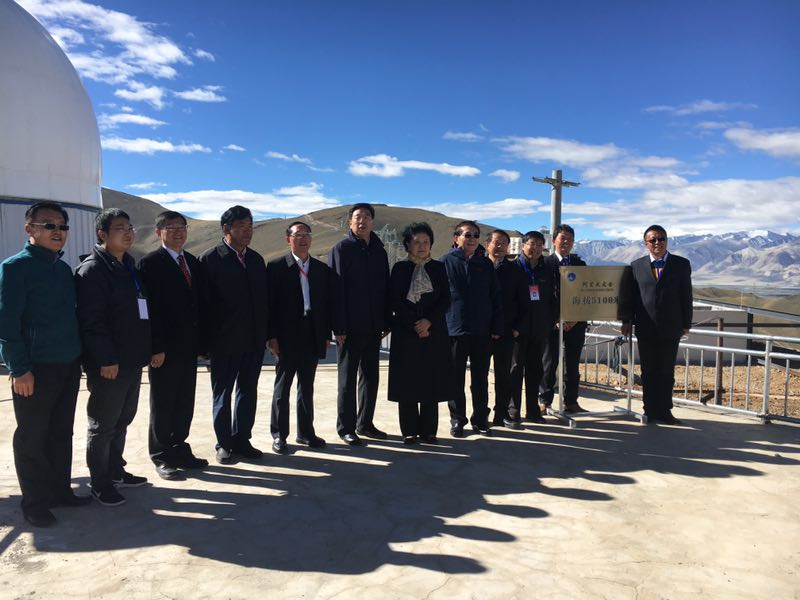On August 20, 2017, Chinese Vice Premier and State Councilor LIU Yandong paid a visit to Ali Observatory in west Tibet, which is located at 5100 meters above sea level and a decade-long endeavor of the National Astronomical Observatories of Chinese Academy of Sciences (NAOC).
During her visit, LIU exchanged with great interest with CAS President BAI Chunli and scientists, technicians and officials on the site. NAOC Director YAN Jun, Director of the Institute of High Energy Physics WANG Yifang and Vice President of the University of Science and Technology of China ZHU Changfei introduced the latest developments at the observatory, including the primordial gravitational wave detection facilities being deployed at Point B, as well as the ground station’s participation in China’s space-based quantum teleportation experiments.
The Vice Premier gave her congratulations and thanks to all who had made the observatory a reality. She said that with their efforts, some very remarkable achievements had been made under extremely harsh working conditions. She spoke highly of the observatory’s contribution to the success of the quantum experiments, and wished good luck to the team of gravitational wave detection. She expected that Chinese scientists will “play a leading role” in the detection project, which is a joint venture between China and the US.
With the unique natural advantages of Ali region and the support of local governments, she said, the observatory will make good use of existing and planned research facilities to support the scientific community in China, serve as an integrated platform for observational studies, talent training and international collaboration, and help boost the social and economic development of Ali and Tibet.
BAI Chunli, President of CAS, encouraged everyone to strive for more innovative research results that will help China stand at the frontiers of fundamental research. Also present were heads of CAS bureaus and officials from local governments.
According to an international review convened in June, Ali observatory is a strong candidate to host China’s upcoming 12m aperture general purpose optical/infrared telescope. The Large Optical/Infrared Telescope (LOT), whose technical design is still under discussion, will be the largest telescope China has ever built and also one of the largest in the world upon scheduled completion around 2025.
Ali’s high elevation, high level of atmospheric transparency, dry weather, convenient logistics among other factors makes it an ideal site for astronomical observation. It may become a new stargazing hotspot in the northern hemisphere following the crisis at Hawaii’s Mauna Kea, home to more than a dozen world-class telescopes, due to lengthy religious and political disputes.


Address: 20A Datun Road, Chaoyang District, Beijing, China code: 100012
Tel: 010-64888708 E-mail: naoc@nao.cas.cn

